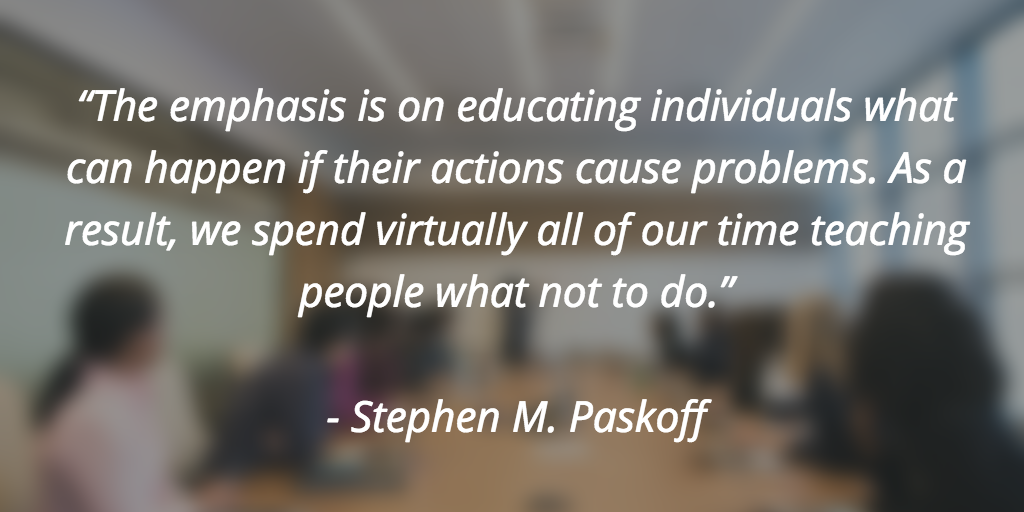Maintaining a focus on compliance is a proven way to prevent problems. Compliance can detect and correct problems if and when they arise. This model, recognized throughout law enforcement, also recognizes that it is unrealistic to expect that all problems will be prevented.
The best way for this model to work is for everyone to understand that they are personally responsible for preventing, detecting and correcting problems. Yet, our compliance training does not recognize this.

Instead, the emphasis is on educating individuals at all levels on what not to do and what can happen if their actions cause problems. Most organizations leave detection and correction up to systems, hotlines, and processes.
As a result, we spend virtually all of our time teaching people what not to do rather than the remaining two-thirds of the solution, which is to teach and convince them what to do when problems arise.
Detection and correction must not only be taught in the classroom but also regularly reinforced from managers and leaders at all levels. This clarifies that the organization is serious about compliance and not just publishing a list of rules.

